Today’s vocabulary includes additional terms for the natural environment along with a few new words for social interaction. Some are recent, others are from my backlog of submitted ideas. Thanks as always to the LEP contributors for the stimulating and creative suggestions. Ayngal fpe’ oer a aysäfpìl eltur tìtxen si frakrr ulte srung si nìtxan!
First, some compounds with ultxa ‘meeting’:
tsawlultxa (n., tsawl.ul.TXA) ‘large gathering, conference’
(Note that the stress on the final element of compounds with ultxa is a minority pattern.)
Tsatsawlultxari alu SETIkon a2ve, nolume oe nìtxan teri tìtsunslu tìreyä a hifkeymì alahe.
‘At the SETIcon II conference I learned a lot about the possibility of life on other worlds.’
tìtsunslu (n., tì.TSUN.slu) ‘possibility’
numultxa (n., nu.mul.TXA) ‘class (for instruction)’
This word derives from nume ‘learn’ + ultxa, i.e., a ‘learn-meeting.’
Mì Siätll a numultxari lì’fyayä leNa’vi, sìlpey oe slìyevu nga numultxatu!
‘I hope you’ll participate in the upcoming Na’vi class in Seattle!’
numultxatu (n., nu.mul.TXA.tu) ‘classmate, member of a class’
snanumultxa (n., sna.nu.mul.TXA) ‘course’
A course, of course, is a collection of classes. 🙂
‘depend on’
English ‘depend on’ has two different senses that are kept separate in Na’vi.
To express the idea that “X depends on Y” in the sense that you need to know Y to determine what X is, Na’vi uses the expression latem ìlä, literally ‘changes according to.’ These are words you already know.
Tìflä latem ìlä seynga ftxey fkol sänumet livek fuke.
‘Success depends on whether or not one follows instructions.’
tìflä (n., tì.FLÄ) ‘success (in general)’
säflä (n., sä.FLÄ) ‘success (an instance of succeeding)’
Recall that ìlä is ADP+, so it causes teynga to become seynga. By the way, ìlä can be used by itself to mean ‘according to’:
Ìlä Feyral, muntxa soli Ralu sì Newey nìwan mesrram.
‘According to Peyral, Ralu and Newey were secretly married the day before yesterday.’
mesrram (n., adv., me.srr.AM) ‘the day before yesterday, two days ago’
mesrray (n., adv., me.srr.AY) ‘the day after tomorrow, two days from now’
pxesrram (n., adv., pxe.srr.AM) ‘three days ago’
pxesrray (n., adv., pxe.srr.AY) ‘three days from now’
The other sense of ‘depend on’ is ‘rely on for one’s safety, sustenance, etc.’ That’s mong:
mong (vtr.) ‘depend on, rely on, trust for protection’
Mong prrnenìl futa sa’nul verewng nìtut.
‘The infant depends on her Mommy to look after her constantly.’
Tsun nga oet mivong.
‘You can rely on me.’
sru’ (vtr.) ‘crush, trample’
Weynflitit ’angtsìkìl srolu’ tspang.
‘Wainfleet was crushed and killed by a hammerhead.’
‘tight’ and ‘loose’
’ekxin (adj., ’e.KXIN) ‘tight’
um (adj.) ‘loose’
Fìraspu’ ’ekxin lu nìhawng. Ke tsun oe yivemstokx.
‘These leggings are too tight. I can’t wear them.’
’ekxinum (n., ’e.KXI.num) ‘tightness/looseness’
pekxinum / ’ekxinumpe (Q., pe.KXI.num / ’e.KXI.num.pe) ‘how tight/loose?’
Pekxinum comes, of course, from pe + ’ekxinum. Since pe causes lenition, the glottal stop drops, and the resulting ee simplies to e, since doubled vowels always simplify to single ones in Na’vi. No further lenition takes place—the kx ejective does not become k.
Ngal molay’ pxawpxunit Loakä a krr pekxinum?
‘When you tried on Loak’s armband, how tight was it?’
And now for the promised nature words:
zeswa (n., ZE.swa) ‘grass’
zeswavi (n., ZE.swa.vi) ‘blade of grass’
lezeswa (adj., le.ZE.swa) ‘grassy’
Palukanit tsole’a, yerik lopx hifwo kxamlä zeswa.
‘Spotting a thanator, the hexapede panicked and escaped through the grass.’
lopx (vin.) ‘panic’
hifwo (vin., HI.fwo – inf. 1,2) ‘flee, escape’
Some more weather terms:
yrrap (n., YRR.ap) ‘storm’
This word is derived from ya ‘air’ + hrrap ‘danger.’
Frapo ne mìfa! Lerok yrrap apxa!
‘Everybody inside! A big storm is approaching!’
’rrpxom (n., ’RR.pxom) ‘thunder’
rawm (n.) ‘lightning (general term)’
atanzaw (n., a.TAN.zaw) ‘forked lightning’ (derived from atan ‘light’ and swizaw ‘arrow’)
rawmpxom (n., RAWM.pxom) ‘thunder and lightning’
And finally, some words for pay azusup, ‘falling water.’
Na’vi doesn’t have a single word for ‘waterfall’; rather, it distinguishes five different kinds of falling and running water:
se’ayl (n., se.’AYL) ‘an individual tall, thin waterfall that pours down a sheer high cliff or off of a floating mountain’ (countable)
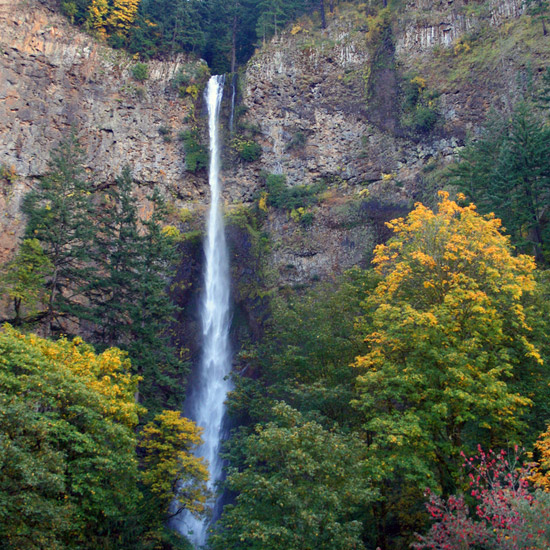
kxor (n.) ‘a wall or bank of powerful falls noted for its deafening roar and deadly force’ (countable, but only rarely)
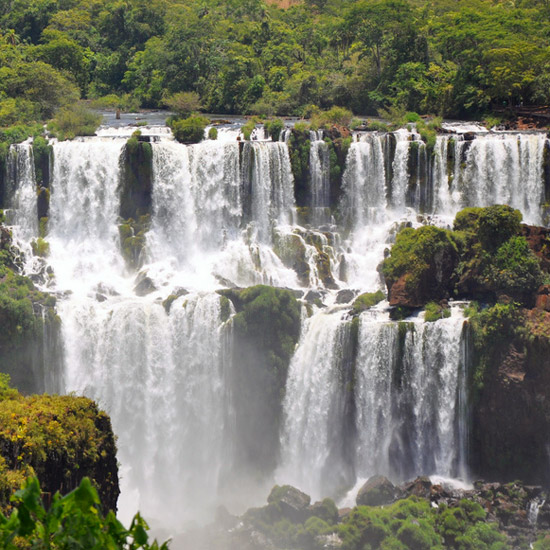
syanan (n., SYA.nan) ‘a single drop or series of smaller falls occurring sequentially along a stream or series of pools’ (countable)
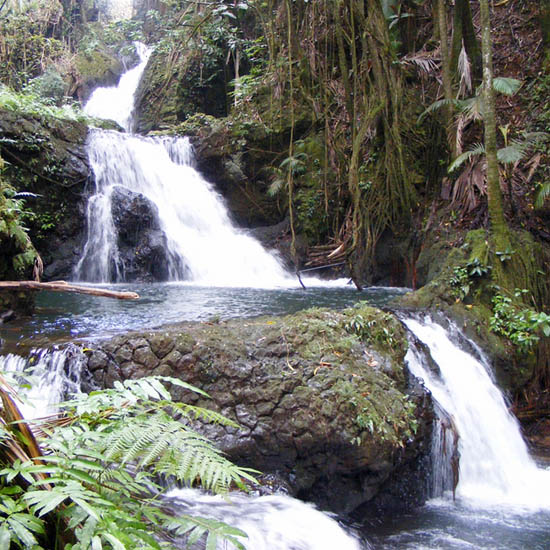
rurur (n., ru.RUR) ‘water that is aerated while flowing among the rocks of a very gradually sloping stream’ (non-countable)
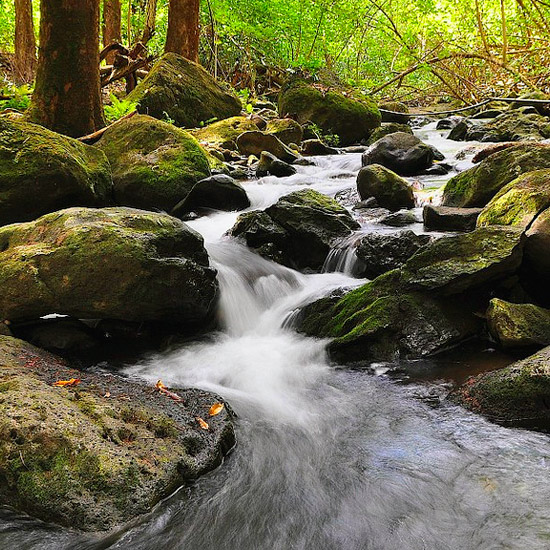
tseltsul (n., TSEL.tsul) ‘whitewater rapids’ (countable, but only rarely)
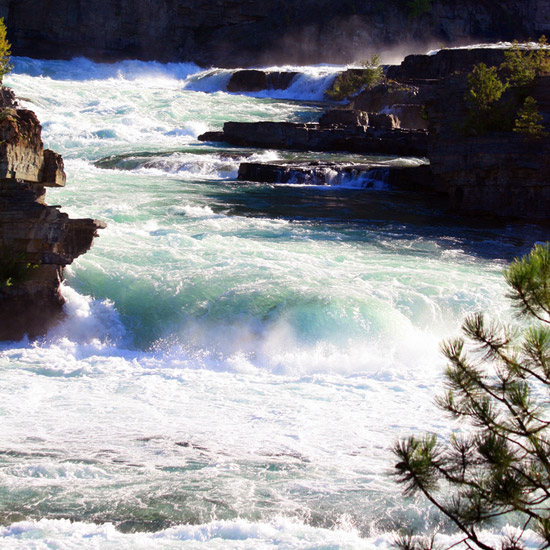
I hope all the Americans in the lì’fyaolo’ had a Fourth of July that was ’o’ nì’aw!
And with that, I’ll leave you until the next time.
Edit 19 July: ’e.KXIN.um –> ’e.KXI.num


Absolutely fantastic, ma Karyu!
Great to hear that you had a good time at the SETIcon II. 🙂
Mipa aylì’uri irayo nìtxan ngaru!
So many wonderful new word shapes. I absolutely love the sound of ’rrpxom … it’s like a rumble in my mouth with a sudden explosion 😛
What a lovely collection of words.
And the words for waterfalls…tsaylì’u lu letsranten nìtxan nang.
Nawma Karyu, nga nìtut tìng ayoeru mipa ralit lì’fyayä leNa’vi! Fìralìri oe irayo seiyi ngaru nìngay! Ma Pawl, ngal vivar nitram sleykivu ayoet. Fa lì’fya leNa’vi ngal leykatem syena zìsìtit ahusum oeyä tìrey pa’one asìltsan nì’ul!
Irayo nìmun!
Ta Nikita.
Irayo seiyi ma Karyu!
Kosmana ayli’u! Suneiu oer nìwotx, nipxi mrr aylì’u alu:
se’ayl,
kxor,
syanan,
rurur,
tseltsul.
🙂
Txantsan! Lu awngaru nì’i’a aylì’u alu yrrap sì rawm. Irayo apxa!
Nìvingkap….. what’s difference between sänumvi (lesson) and numultxa (class). To me they both are quite similar…
Sänumvi is the content of the lesson, kinda like the curriculum; it is the stuff that would be taught to a numultxa.
Ma Pawl,
Vingkeiap oeti fula set faylì’ufa amip tsun fko sliva’tsu mì rel re’oä pìlokä ngeyä a fnepayit azusup. Tsarelìl nga’ pxese’aylit, kefyak? 🙂
Ngian, skxakep ke fkeytayatsok kawkrr tam a aylì’u nìNa’vi fu nì’Ìnglìsì keng fu kea lì’fyafa alahe nìftxan kuma tsun oe livawk teri teynga pìmtxan teya si oer fwa fìfya lì’fya leNa’vi var ’ivong. Hayalo a tìran oe txayolok lezeswa fu stawm pamit rururoä, layu oer ’ok ngeyä ulte nìlaw lrrtok si nìlkeftang. Faylì’uri a so’ha fìtxan, nìmun ngaru seiyi irayo.
Ma Prrton,
Fwa faylì’fyavi lu ngaru txanwawe oeru teya si nìngay. Ke lu kawtu a ngato kem soli nì’ul fte tsivun lì’fya leNa’vi vivar ’ivong. Ngeyä ke ftang a tìkangkemìri sì tìkanuri sì fìlì’fyayä tìyawnìri seiyi oe irayo nìtxan.
Ke pxan kaw’it, ma Karyu, kaw’it.
Irayo nìtxan, nìfrakrr! Nìpxi sunu oeru ayrel alu sìkanong. 🙂
Another welcome addition to the Na’vi language. I especially love the details about the waterfalls.
I have watched the movie very closely several times to see if grass appears anywhere. I have not seen any, but maybe I just missed it. In which scenes does grass appear? I wish more emphasis was being placed on items visible in the movie that have not been named. For example, what is the name of the piece of clothing that is worn beneath the loincloth (the strap that fits over the groin – see Tsu’tse after he rolls off the ramp in the back of the shuttle during the battle)? Also, since the Na’vi do not have written language, how do they know which words appear in the dictionary? They have NO dictionary!
This confuses me. I did not expect tspang there. Not like that at least. What am I missing? This grammar does not compute for me.
Other than that, this is yet another FANTASTIC post! It’s about TIME we get storm, thunder, and lightning, several types of waterfall (which is totally fascinating!), etc!
It conforms very well to a normal continuative, ‘crushed & killed’… Only ‘crushed’ is marked in in the perfective. That’s how I read it, anyway.
and he did it again here:
To what extent can one stack verbs like this?
tìpawm eltur tìtxen si, ma Tirea.
Yes, the issue of the verb back-to-back would probably be an interesting read 🙂
However, if I read the first mentioning of this correctly then it can only be two verbs.
tìpawm eltur tìtxen si, ma Tirea.
If I understood the first post correctly in which this was mentioned (»Getting to know you«, part 3) it can only happen with two verbs. It said: Two verbs back-to-back without a conjunction indicates that they’re performed in sequence.
But I agree with you that this issue would definitely make for an interesting read in a separate blog entry. 🙂
Ohh! I see. Thanks for pointing that out! Somehow I seem to have missed that. Irayo 🙂
I really like the different kinds of waterfalls, but it occurs to me that these words are assuming a constant flow of water. How are they applied with varying water flows? For example, in most mountains on Earth that receive heavy snowfall in the winter, the water flows the fastest during the spring melt. During the dry season, the water flow may stop completely. Unfortunately, Cameron has not given much insight into the seasons on Pandora. Maybe constant water flow is the norm. Does anyone have any insight into this? Thanks.
Why would the terms not describe the water features as encountered whenever encountered? A robust syanan might be reduce to a mere rurur atsawl in a dry Summer, might it not? Why must seasonal changes have any relevancy on the basic names for the natural phenomena?
Well, everything in nature is constantly changing; just some things are faster than others. As a waterfall is observed today, it may be very different at some point in the future. Since two of these water features have flow rates built into their definitions, kxor and tseltsul, seasonal variations do matter. If these definitions followed the human way of classifying waterfalls by shape, I would agree with your third question. Alas, there seems to be no generally accepted way to classify waterfalls on Earth, so I doubt that the Na’vi would be much better, even though they are much closer to nature than us. Maybe this is a good introduction to adding concepts about time varying phenomena into the language.
With regard to your “rurur atsawl,” the definition for rurur is ‘water that is aerated while flowing among the rocks of a very gradually sloping stream.’ A “tall, very gradually sloping stream” is not logical, and illustrates the problem I see with these definitions as they now stand. On the other hand, I fear adding too much complexity to the language, because it seems to be losing its conceptual integrity already. This situation is the motivation for my comment above about the Na’vi not having dictionaries. This language is becoming too human and not enough Na’vi, in my very humble opinion.
What do you mean by this and what is your basis?
Sorry for the delay, life, especially work, interferes with fun too often…
I could write a book in reply, but since I have three in the works now, I don’t want to start another. I will try to be brief. My involvement with this language began with the Na’vi writing contest 18 months ago. I wrote a short hunting story, and then printed off the dictionary to begin translating. Hit the wall immediately because most words I used did not exist in the language. How could the language of a civilization of hunters not have most hunting terms? I put the contest aside, and recycled my tale here (http://www.fanfiction.net/u/3185063/Tisrusewa_Karyu). Since that time, I have been a lurker here and on learnnavi.com. Keep waiting for enough nouns to describe what is seen in the movie, and words for the implied activities not seen (hunting), but they have not arrived yet.
If I was seeking purity in the language, I would rail against useless vanity words like prrkxentrrkrr, the loan words, eight and nine, the linguistic terms, lawyer, and so forth. Those really don’t matter. This language is for a fictional people on a fictional moon of a fictional planet. Language purity will not cause world peace, end starvation, fix the world economy, or break the drought. What I do care about is that the language is losing sight of its intended purpose, being the language of the Na’vi. The Na’vi are a pre-technological and pre-agricultural race of hunter-gatherers. The Na’vi have great appeal because of the apparent simplicity and elemental nature of their existence. That is not to say that they are simple or stupid. They should have a rich and expressive language. However, the complexity of their civilization has not reached the point where writing has become necessary. They have an oral culture and not a written culture. Hence, their language should reflect their culture. Lately, the complexity of the language has reached a point where it must be documented in writing. Over the past seven months, Dr. Frommer has written the following:
1. (2012 March 31) “However, in all other cases sna- is not productive, and you’re not free to form your own words with this prefix. The meanings of such sna- words can be unpredictable, and so they have to be listed in the dictionary.”
2. (2012 February 29) “First of all, it’s important to keep in mind that neither one is productive. That is, you’re not free to coin new tì- and sä- words at will; you need to find them in the dictionary and learn their meanings.”
3. (2011 December 31) “The bottom line is that –tu words are sometimes unpredictable. The –tu suffix is not productive, so don’t try to coin these words yourself—you need to find them in the dictionary.”
Clearly, there is more and more reliance on documenting the complexities of this language in writing. Unfortunately for the Na’vi, they do not have writing. They cannot use their own language properly because they do not have the magic key, the written word. That is why I say this language is more suited to Earth than Pandora. Such complexities should be eliminated (generalized, removed, replaced, whatever works best, you are the linguists) so that reliance on written words and rules is not required. Please restore the conceptual integrity of the language.